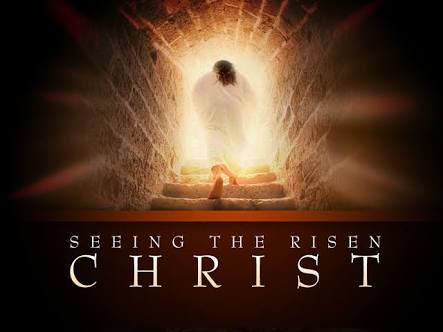The death and resurrection of Jesus Christ as the Son of God is perhaps
the most controversial event in human history. Many people have worked
tirelessly to cover-up and spin the story ever since the day it
happened. Despite those efforts to discredit the true story, Christians
can have confidence in this most miraculous act of love.
Here are why we can believe Jesus rose from the dead;
1. Jesus himself testified to his coming resurrection from the dead.
Jesus
spoke openly about what would happen to him: crucifixion and then
resurrection from the dead. “The Son of Man must suffer many things and
be rejected by the elders and the chief priests and the scribes and be
killed, and after three days rise again” (Mark 8:31; see also Matthew
17:22; Luke 9:22). Those who consider the resurrection of Christ
unbelievable will probably say that Jesus was deluded or (more likely)
that the early church put these statements in his mouth to make him
teach the falsehood that they themselves conceived. But those who read
the Gospels and come to the considered conviction that the one who
speaks so compellingly through these witnesses is not the figment of
foolish imagination will be unsatisfied with this effort to explain away
Jesus’ own testimony to his resurrection from the dead.
This is
especially true in view of the fact that the words which predict the
resurrection are not only the simple straightforward words quoted above,
but also the very oblique and indirect words which are far less likely
to be the simple invention of deluded disciples. For example, two
separate witnesses testify in two very different ways to Jesus’
statement during his lifetime that if his enemies destroyed the temple
(of his body), he would build it again in three days (John 2:19; Mark
14:58; cf. Matthew 26:61). He also spoke illusively of the “sign of
Jonah” — three days in the heart of the earth (Matthew 12:39; Matthew
16:4). And he hinted at it again in Matthew 21:42 — “The very stone
which the builders rejected has become the head of the corner.” On top
of his own witness to the coming resurrection, his accusers said that
this was part of Jesus’ claim: “Sir, we remember how that impostor said,
while he was still alive, ‘After three days I will rise’” (Matthew
27:63).
Our first evidence of the resurrection, therefore, is
that Jesus himself spoke of it. The breadth and nature of the sayings
make it unlikely that a deluded church made these up. And the character
of Jesus himself, revealed in these witnesses, has not been judged by
most people to be a lunatic or a deceiver.
2. The tomb was empty on Easter.
The
earliest documents claim this: “When they went in they did not find the
body of the Lord Jesus” (Luke 24:3). And the enemies of Jesus confirmed
it by claiming that the disciples had stolen the body (Matthew 28:13).
The dead body of Jesus could not be found. There are four possible ways
to account for this.
His foes stole the body. If they did (and they never claimed to have
done so), they surely would have produced the body to stop the
successful spread of the Christian faith in the very city where the
crucifixion occurred. But they could not produce it.
His
friends stole the body. This was an early rumor (Matthew 28:11-15). Is
it probable? Could they have overcome the guards at the tomb? More
important, would they have begun to preach with such authority that
Jesus was raised, knowing that he was not? Would they have risked their
lives and accepted beatings for something they knew was a fraud?
Jesus
was not dead, but only unconscious when they laid him in the tomb. He
awoke, removed the stone, overcame the soldiers, and vanished from
history after a few meetings with his disciples in which he convinced
them he was risen from the dead. Even the foes of Jesus did not try this
line. He was obviously dead. The Romans saw to that. The stone could
not be moved by one man from within who had just been stabbed in the
side by a spear and spent six hours nailed to a cross.
God
raised Jesus from the dead. This is what he said would happen. It is
what the disciples said did happen. But as long as there is a remote
possibility of explaining the resurrection naturalistically, modern
people say we should not jump to a supernatural explanation. Is this
reasonable? I don’t think so. Of course, we don’t want to be gullible.
But neither do we want to reject the truth just because it’s strange. We
need to be aware that our commitments at this point are much affected
by our preferences — either for the state of affairs that would arise
from the truth of the resurrection, or for the state of affairs that
would arise from the falsehood of the resurrection. If the message of
Jesus has opened you to the reality of God and the need of forgiveness,
for example, then anti-supernatural dogma might lose its power over your
mind. Could it be that this openness is not prejudice for the
resurrection, but freedom from prejudice against it?
3. The disciples were almost immediately transformed.
The
disciples almost immediately transformed from men who were hopeless and
fearful after the crucifixion (Luke 24:21, John 20:19) into men who
were confident and bold witnesses of the resurrection (Acts 2:24, Acts
3:15, Acts 4:2).
Their explanation of this change was that they
had seen the risen Christ and had been authorized to be his witnesses
(Acts 2:32). The most popular competing explanation is that their
confidence was owing to hallucinations. There are numerous problems with
such a notion. The disciples were not gullible, but level-headed
skeptics both before and after the resurrection (Mark 9:32, Luke 24:11,
John 20:8-9). Moreover, is the deep and noble teaching of those who
witnessed the risen Christ the stuff of which hallucinations are made?
What about Paul’s great letter to the Romans? I personally find it hard
to think of this giant intellect and deeply transparent soul as deluded
or deceptive, and he claimed to have seen the risen Christ.
4. Paul (plus 500 others) saw the risen Christ.
Paul
claimed that, not only had he seen the risen Christ, but that 500
others had seen him also, and many were still alive when he made this
public claim.
“Then he appeared to more than five hundred
brothers at one time, most of whom are still alive, though some have
fallen asleep” (1 Corinthians 15:6). What makes this so relevant is that
this was written to Greeks who were skeptical of such claims when many
of these witnesses were still alive. So it was a risky claim if it could
be disproved by a little firsthand research.
5. The thriving early Christian church supports the resurrection fact.
The
sheer existence of a thriving, empire-conquering early Christian church
supports the truth of the resurrection fact. The church spread on the
power of the testimony that Jesus was raised from the dead and that God
had thus made him both Lord and Christ (Acts 2:36). The Lordship of
Christ over all nations is based on his victory over death. This is the
message that spread all over the world. Its power to cross cultures and
create one new people of God was a strong testimony of its truth.
6. The Apostle Paul’s conversion supports the truth of the resurrection.
He
argues to a partially unsympathetic audience in Galatians 1:11-17 that
his gospel comes from the risen Jesus Christ, not from men. His argument
is that before his Damascus Road experience when he saw the risen
Jesus, he was violently opposed to the Christian faith (Acts 9:1). But
now, to everyone’s astonishment, he is risking his life for the gospel
(Acts 9:24-25). His explanation: The risen Jesus appeared to him and
authorized him to spearhead the Gentile mission (Acts 26:15-18). Can we
credit such a testimony? This leads to the next argument.
7. The New Testament witnesses do not bear the stamp of dupes or deceivers.
How
do you credit a witness? How do you decide whether to believe a
person’s testimony? The decision to give credence to a person’s
testimony is not the same as completing a mathematical equation. The
certainty is of a different kind, yet can be just as firm (I trust my
wife’s testimony that she is faithful). When a witness is dead, we can
base our judgment of him only on the content of his writings and the
testimonies of others about him. How do Peter and John and Matthew and
Paul stack up?
In my judgment (and at this point we can live
authentically only by our own judgment—Luke 12:57), these men’s writings
do not read like the works of gullible, easily deceived or deceiving
men. Their insights into human nature are profound. Their personal
commitment is sober and carefully stated. Their teachings are coherent
and do not look like the invention of unstable men. The moral and
spiritual standard is high. And the lives of these men are totally
devoted to the truth and to the honor of God.
8. The Holy Spirit opens our eyes to the gospel of Christ’s death and resurrection.
There is a self-authenticating glory in the gospel of Christ’s death and resurrection as narrated by the biblical witnesses.
The
New Testament teaches that God sent the Holy Spirit to glorify Jesus as
the Son of God. Jesus said, “When the Spirit of truth comes, he will
guide you into all the truth…. He will glorify me” (John 16:13). The
Holy Spirit does not do this by telling us that Jesus rose from the
dead. He does it by opening our eyes to see the self-authenticating
glory of Christ in the narrative of his life and death and resurrection.
He enables us to see Jesus as he really was, so that he is irresistibly
true and beautiful. The apostle stated the problem of our blindness and
the solution like this: “The god of this world has blinded the minds of
the unbelievers, to keep them from seeing the light of the gospel of
the glory of Christ, who is the image of God…. For God, who said, ‘Let
light shine out of darkness,’ has shone in our hearts to give the light
of the knowledge of the glory of God in the face of Jesus Christ” (2
Corinthians 4:4, 6).
A saving knowledge of Christ crucified and
risen is not the mere result of right reasoning about historical facts.
It is the result of spiritual illumination to see those facts for what
they really are: a revelation of the truth and glory of God in the face
of Christ — who is the same yesterday today and forever.
[written by John Piper]






